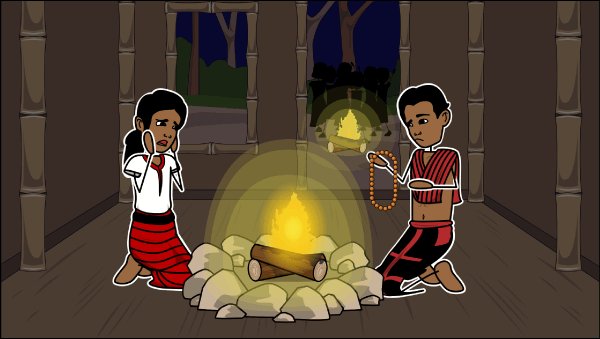Wedding dance by Amador Daguio captures the beauty of love, tradition, and heartfelt celebration. This enchanting piece weaves together the rhythm of life and the essence of commitment. As couples prepare for their special day, they often seek inspiration in art and literature, and Daguio’s poem offers a vivid portrayal of the wedding dance they envision.
In the dance, each movement tells a story of joy, connection, and unity. It invites readers to reflect on their own experiences with love and the meaningful moments shared during festive celebrations. Let this exploration of Daguio’s work inspire your own romantic journey.
wedding dance by amador daguio
Amador Daguio’s “Wedding Dance” is a remarkable piece that captures the essence of love and tradition. This short story beautifully illustrates the significance of wedding celebrations in Filipino culture. Through the eyes of its characters, readers experience the excitement, tension, and joy that accompany the union of two families. Let’s dive deeper into the themes, characters, and cultural significance of this captivating narrative while exploring how it reflects the importance of dance during weddings.
Understanding the Story: A Brief Summary
“Weddings” in Filipino culture are not just about the couple; they are grand family affairs. Amador Daguio’s story revolves around the wedding of two characters, facing a mixture of emotions. The protagonist, a young bride, represents the traditional values colliding with modern expectations. The dance symbolizes not only celebration but also the merging of two families and their customs.
In the story, the bride’s family holds onto traditions, hoping to maintain a sense of cultural integrity. On the other hand, the groom’s family embodies a more contemporary approach, showcasing how love can bridge generational gaps. The dance serves as a metaphor for these contrasts and the eventual unity that love creates.
The Symbolism of Dance in the Story
Dance is a vital component of weddings across cultures, and in “Wedding Dance,” it takes on multi-layered meanings:
Cultural Tradition
Dance represents the rich traditions of Filipino weddings. It’s not merely about entertainment; it signifies the continuation of cultural heritage. The couple’s movements reflect their families’ histories, hopes, and dreams.
Expression of Emotion
Throughout the story, dance acts as an emotional outlet for the characters. It allows them to express love, joy, longing, and sometimes conflict. The energy on the dance floor reflects the couple’s mounting anticipation, fears, and the joy of their union.
Community Bonding
Weddings bring together family and friends. The communal aspect of dance in “Wedding Dance” highlights the support and joy shared among loved ones. It underscores the idea that marriage is not just a union of two individuals but the coming together of two families.
Character Analysis
Understanding the characters in “Wedding Dance” enriches our appreciation of the story. Here’s a closer look at the main characters:
The Bride
The bride symbolizes tradition and nostalgia. She navigates the expectations of her family while yearning for personal happiness. Her character arc showcases the internal struggle many individuals face when balancing familial duty with personal desire.
The Groom
The groom represents modernity and change. He embraces new ideas but respects tradition. His character invites readers to consider how love can adapt and thrive in evolving circumstances.
The Families
Each family embodies different cultural values. The bride’s family clings to tradition, while the groom’s family embraces a more modern approach. This dichotomy sets the stage for rich storytelling, highlighting how family dynamics significantly impact personal relationships.
The Cultural Significance of Weddings
Weddings are significant events in many cultures, particularly in the Philippines. They serve as a social gathering where people come together to celebrate love, commitment, and familial ties. In Daguio’s story, this cultural backdrop enhances the narrative’s depth:
Connection to Filipino Heritage
The story reflects Filipino customs surrounding marriage, emphasizing the importance of rituals, such as the wedding dance. These practices embody the values and beliefs of the community, showcasing how love intertwines with cultural identity.
Social Dynamics
Weddings also highlight the social structures within Filipino society. The interactions between families and community members during the dance reveal deeper insights into social hierarchies and relationships. The wedding acts as a stage for not just personal love but also community bonding.
Ritual and Celebration
The celebrations surrounding weddings, including food, music, and dance, create an atmosphere of joy and unity. Daguio captures this spirit, reminding readers of the essential rituals that connect individuals to their culture.
The Dance: A Closer Look
The wedding dance in Amador Daguio’s narrative occupies a central place, and it’s packed with meaning. Here’s what makes the dance particularly special in the story:
Creating Memories
The wedding dance is a moment that couples recall for years to come. It marks a significant milestone in their lives. Daguio illustrates how this moment is not just a sequence of movements but a cherished memory.
Uniting Different Generations
The dance brings together older and younger generations. It’s a platform where family traditions are passed down, and new expressions of love emerge. This blending of old and new signifies hope for the future.
Reflections of Individual Identity
As characters dance, they express their individuality. The movements reflect their feelings, personalities, and the tension between tradition and modernity. Each dancer contributes to the overall story through their unique style.
Emotional Undertones in the Wedding Dance
The wedding dance does more than entertain; it carries emotional weight. Understanding these undertones adds richness to Daguio’s writing:
Tension and Anticipation
Before the dance begins, characters often feel anxious. This anticipation reflects their excitement and fear about the future. Daguio captures these emotions beautifully, allowing readers to empathize with the characters.
Joy and Celebration
When the dance starts, joy takes over. Characters express their happiness through laughter and movement, creating an atmosphere of celebration. Daguio emphasizes the healing power of communal joy during significant life events.
Nostalgia
For many characters, the dance evokes memories of their past. Daguio expertly weaves nostalgia into the narrative, illustrating how moments can confirm shared histories and dreams.
Influence of Music on the Dance
Music acts as the heartbeat of any wedding dance. In “Wedding Dance”, the rhythm and melodies influence the characters’ movements and emotions:
Setting the Mood
The right music creates an atmosphere of excitement and anticipation. Daguio highlights how the songs chosen for the wedding reflect the couple’s personality and cultural background.
Facilitating Connection
Music brings people together. It encourages interaction, fueling the energy on the dance floor. In Daguio’s story, the music chosen enhances the feelings of unity and joy among the guests.
Evoking Emotion
Certain songs resonate deeply with individuals. Daguio shows how specific tunes can evoke memories and emotions, adding depth to the dance experience.
Key Themes in “Wedding Dance”
Daguio’s story encompasses several core themes that resonate with readers:
Love and Commitment
At its heart, “Wedding Dance” is about love. The dance symbolizes the couple’s commitment to each other and their families. It reflects the ideal that love requires effort and understanding.
The Clash of Tradition and Modernity
Daguio explores how cultural expectations can challenge personal desires. The story examines how characters negotiate these differences, finding a path that honors both their heritage and their identities.
Family Dynamics
The story sheds light on the importance of family in personal relationships. It illustrates how family members can support or challenge couples, impacting their marriage journey.
Lessons from “Wedding Dance” by Amador Daguio
Readers can extract valuable lessons from this literary work that resonate with everyday life:
The Importance of Tradition
Honoring traditions can strengthen one’s identity. Daguio highlights how embracing cultural heritage can provide a sense of belonging and continuity.
The Power of Communication
The characters showcase the importance of open communication in relationships. Daguio reminds us that discussing feelings and expectations is vital for mutual understanding.
Celebrating Milestones
Life is filled with milestones, big and small. Daguio encourages readers to celebrate these moments, as they create memories that define our journeys.
Amador Daguio’s “Wedding Dance” offers a beautifully woven narrative that reflects on love, tradition, and the cultural significance of weddings. Through the exploration of dance, emotions, and relationships, the story illuminates the vibrant tapestry of Filipino culture. By delving into the themes, characters, and the importance of dance, readers come away with a deeper understanding of what it means to celebrate love within the context of family and tradition. The wedding dance not only serves as a celebration but as a poignant reminder of the connections we forge and the stories we share.
The Wedding Dance by Amador Daguio | English Lesson
Frequently Asked Questions
“`html
What themes and emotions does “Wedding Dance” by Amador Daguio explore?
“Wedding Dance” by Amador Daguio delves into themes of love, tradition, and cultural identity. The poem captures the beauty and complexity of a wedding celebration, emphasizing the joy and unity that love brings. However, it also reveals the underlying tensions and sacrifices that individuals face in the pursuit of happiness, highlighting the bittersweet nature of relationships within a cultural context.
How does Daguio use imagery to enhance the poem?
Daguio employs vivid imagery to evoke the sights, sounds, and sensations of the wedding dance. He describes the physical movements of the dancers, the vibrant colors of their attire, and the lively atmosphere surrounding the event. This imagery not only immerses readers in the scene but also conveys the emotional depth of the characters, allowing them to feel the celebratory yet poignant nature of the occasion.
What is the significance of the setting in “Wedding Dance”?
The setting plays a crucial role in “Wedding Dance,” as it reflects the cultural and social dynamics at play. The poem is set in a traditional context, emphasizing the importance of community and familial bonds. The backdrop of the wedding serves to highlight not only the joyous celebration but also the expectations and pressures that come with it, illustrating the contrast between individual desires and societal obligations.
How does the poem address the concept of sacrifice in relationships?
“Wedding Dance” presents the theme of sacrifice as a recurring element in relationships. The characters often grapple with the idea of giving up personal aspirations for the sake of love and tradition. Daguio expresses this struggle through the characters’ internal conflicts, demonstrating how love can require significant compromises, which adds depth to the narrative and resonates with readers who reflect on their own experiences.
What literary devices does Amador Daguio employ in “Wedding Dance”?
Daguio utilizes various literary devices to enrich the poem’s narrative. He incorporates metaphors and similes to draw parallels between the dance and the complexities of love. The use of symbolism, particularly in the imagery of the dance itself, serves to convey deeper meanings about connection and tradition. Additionally, the poem’s rhythmic quality mirrors the movement of the dance, enhancing the overall reading experience.
“`
Final Thoughts
The wedding dance by Amador Daguio beautifully captures the essence of love and commitment. It portrays the intimate moments shared between couples, highlighting their connection and joy as they embark on a new journey together.
Through vivid imagery and heartfelt emotions, Daguio creates a poetic expression that resonates deeply. The dance symbolizes the unity and shared dreams of the couple, making it a timeless piece in the realm of romantic literature.
















